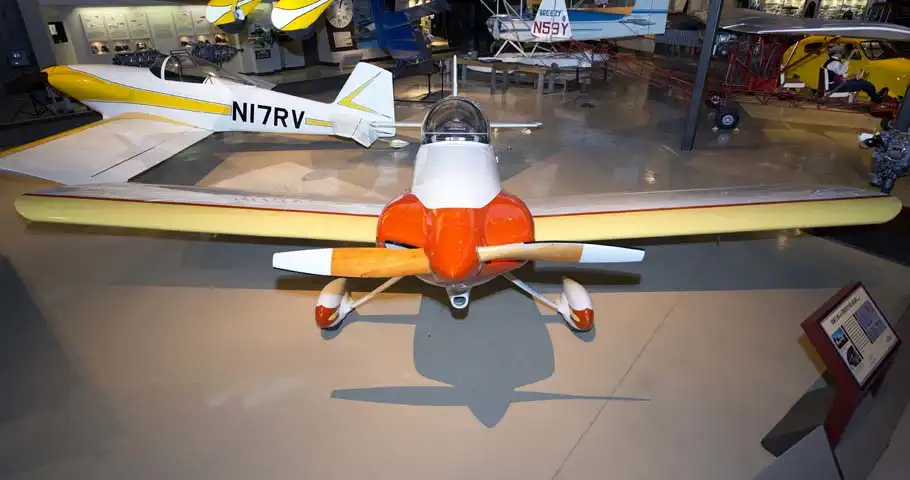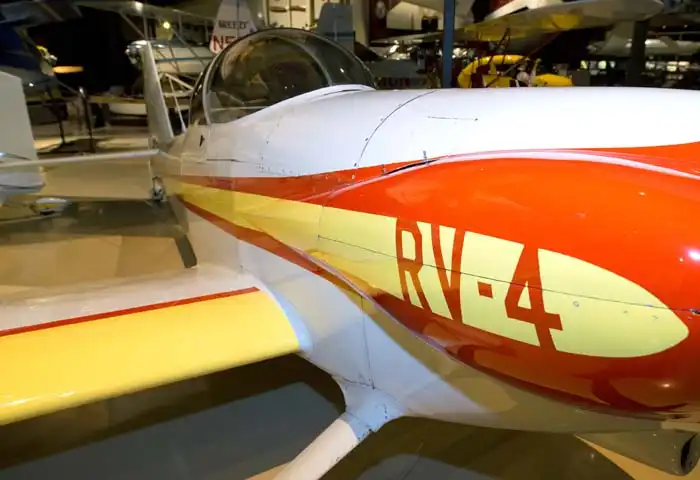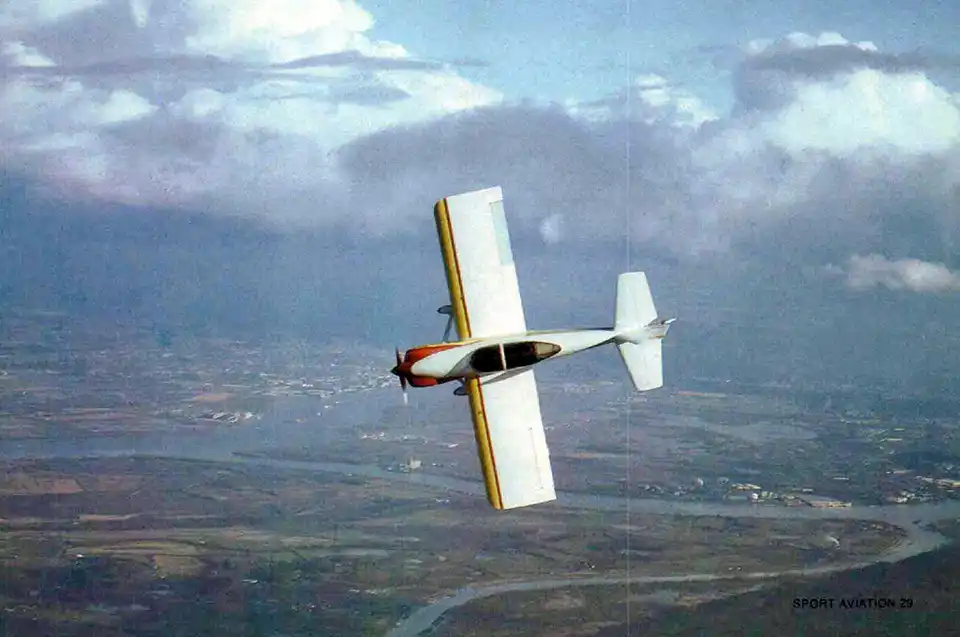1979 Van's RV-4 - N14RV
Location: Homebuilts
Dick VanGrunsven’s definition of sport flying had its core in an airplane that would become a virtual extension of the pilot. This thinking led him to the popular and successful RV-3, but many of his customers had one complaint: the airplane needed a second seat. VanGrunsven, EAA Lifetime 3204, idly considered the idea, but didn’t get serious about it until he got married.
VanGrunsven had a specific set of goals for the RV-4, including good short field performance, comparable or better visibility than the RV-3, high cruise speed, and structural integrity, performance, and controllability appropriate for aerobatics. In addition, he also wanted the RV-4 to be capable of carrying two 180-pound people up to 6 feet 2 inches tall, and, of course, the airplane had to be something that could be built by the average homebuilder.
Since the RV-3 met all except the two-place stipulation, it was logical to use that airplane as the starting point. After a little research and designing, VanGrunsven found that to carry two people he needed to widen the fuselage, increase the tail surfaces, expand the wing area, and modify the landing gear to accommodate the extra weight. All of these changes added up to an entirely new airplane, far more than just a modified RV-3.
Actual construction of the RV-4 began in the fall of 1975 and wasn’t completed until August of 1979. The RV-4 was constructed of stressed skin aluminum and featured Wittman landing gear legs. The fuel tanks were located in the leading edge of the wings, and the airplane was powered by a 150-hp Lycoming O-320 engine.
The first flight of the RV-4 was on August 21, 1979, and, while there were still some kinks to work out, the two-place airplane performed nicely. Testing continued through the fall of 1979, ranging from basic tests to performance and aerobatic tests. The aircraft demonstrated structural integrity, performance margins, and controllability required for good aerobatics. In other words, the RV-4 was exactly the airplane VanGrunsven wanted it to be.
Testing was completed in early 1980 and VanGrunsven began working on the construction drawings and production tooling for kits. The RV-4’s overall performance with the 150-hp engine was equivalent to that of a single place RV-3 with a 125-hp engine.
Dick VanGrunsven and his wife Diane enjoyed the prototype RV-4 for many years. In 1997, they donated it to the EAA Aviation Museum.
For the full story of the RV-4 in VanGrunsven’s own words, see “The RV-4 Story” in the May 1980 issue of Sport Aviation magazine.
Length: 20 feet, 4 1/2 inches
Wingspan: 23 feet
Empty Weight: 890 pounds
Gross Weight: 1,500 pounds
Cruise Speed: 186 mph
Maximum Speed: 201 mph
Seats: 2
Powerplant: Lycoming O-320
Horsepower: 150 hp





